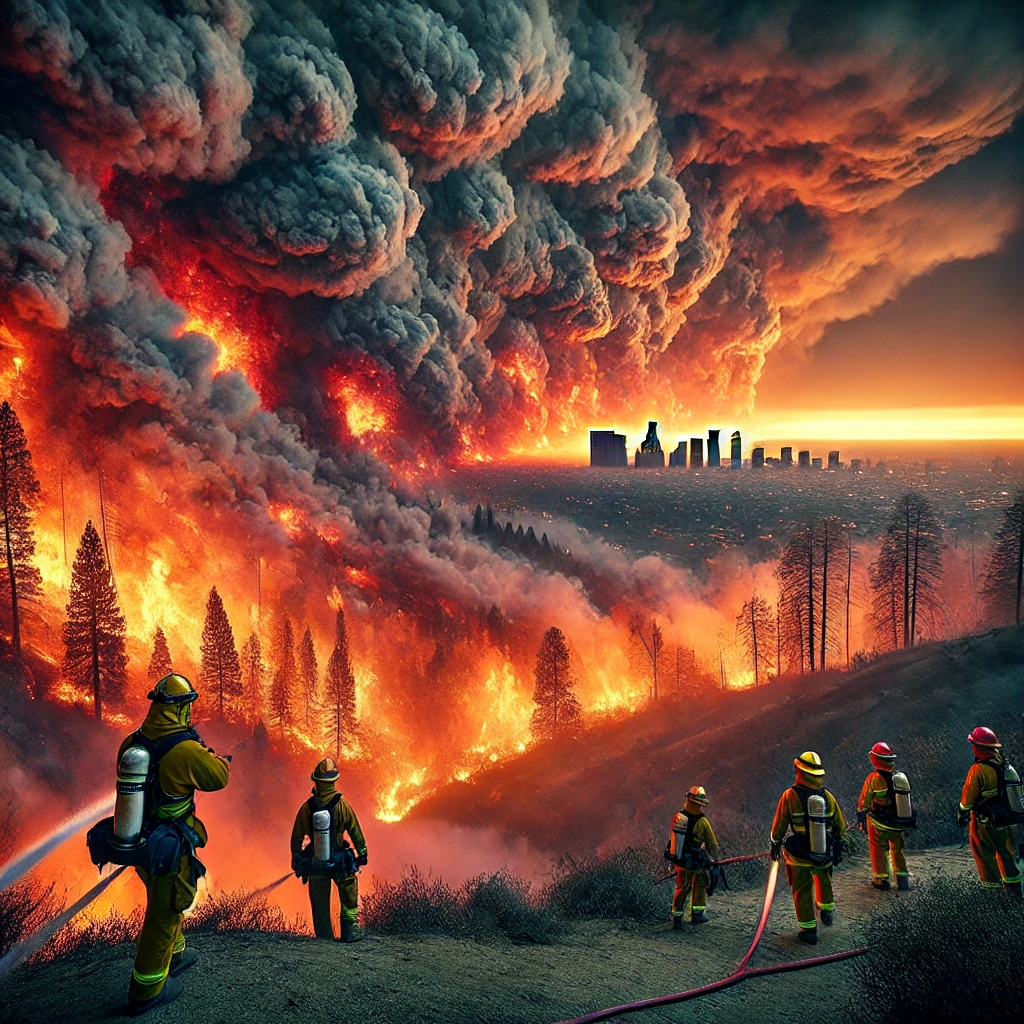Wildfires have become an increasingly devastating challenge in Los Angeles (LA), causing widespread destruction, loss of life, and significant economic and environmental impacts. The recent LA fires are part of a devastating trend of California wildfires, which have become increasingly severe due to climate change and other contributing factors. These fires are a stark reminder of the urgent need for preparedness, response, and long-term solutions to mitigate their effects.
Overview of the LA Fires
The LA fires are among the most destructive natural disasters in California. Each year, these wildfires consume thousands of acres, destroy homes, and disrupt lives. The 2025 wildfires alone have already scorched over 50,000 acres, claiming lives and leaving many displaced.
Evacuation orders have affected over 179,000 residents, and emergency responders continue battling uncontained flames. These fires serve as a harsh warning about the increasing frequency and severity of wildfires in the region.
Evacuations and Immediate Impact
Thousands of residents have been forced to evacuate their homes, carrying only essential belongings. The chaotic scenes of traffic jams and overwhelmed shelters highlight the unpreparedness many face when disaster strikes. LA evacuation orders have affected tens of thousands, with many still awaiting updates on when they can return home. Authorities have reported multiple casualties, while looting has added to the chaos, leading to over 20 arrests.
Unhealthy air quality has blanketed much of LA, even in areas untouched by the flames. Schools, universities, and businesses have shut down, disrupting daily life. Despite heroic efforts, firefighters face challenges containing blazes fueled by high winds and dry vegetation.
Causes of the LA Fires
Several factors contribute to the LA fires, including:
- High Winds: The infamous Santa Ana winds, with speeds exceeding 60 mph, act as catalysts for the rapid spread of flames.
- Dry Vegetation: Prolonged drought conditions leave vegetation brittle and highly flammable.
- Human Activity: Approximately 95% of wildfires are human-caused, whether accidental or intentional.
- Climate Change: Rising temperatures and prolonged dry spells create ideal conditions for wildfires, with experts linking the increasing frequency of fires to global warming.
Economic Costs and Damages
The economic toll of the LA fires is staggering. Insured losses from the 2025 wildfires are projected to exceed $8 billion, making it one of the costliest fire outbreaks in US history. Fire damage insurance premiums are rising as residents struggle to cover rebuilding costs, with many policies failing to account for the full extent of damages.
Destroyed properties include homes, businesses, and critical infrastructure like power lines and communication towers. The entertainment industry has also felt the impact, with iconic locations like Sunset Boulevard suffering extensive damage. For residents, rebuilding costs and insurance premiums add another layer of financial strain.
Environmental and Health Impacts
Wildfires leave a lasting impact on the environment and public health:
- Loss of Biodiversity: Fires destroy habitats, threatening wildlife and plant species.
- Air Pollution: Thick smoke contributes to respiratory issues and worsens existing health conditions.
- Soil Erosion: Burned landscapes are more susceptible to erosion, affecting water quality and agricultural productivity.
- Carbon Emissions: Wildfires release massive amounts of carbon dioxide, exacerbating climate change.
Communities affected by the LA fires are experiencing worsening air quality, leading to increased hospital visits and long-term health concerns.
Recovery and Relief Efforts
Recovery efforts are underway, but the scale of destruction makes the process slow and challenging. Relief initiatives include:
- Emergency Shelters: Providing safe spaces for evacuees.
- Financial Assistance: Government and nonprofit organizations are offering aid to affected families.
- Community Support: Local volunteers are helping distribute supplies and provide emotional support.
- Rebuilding Programs: Efforts are focused on reconstructing homes and infrastructure, though challenges remain with labor shortages and rising costs.
Residents seeking assistance can find resources through organizations like the Red Cross and FEMA, which provide support for housing, food, and financial recovery.
Prevention and Preparedness
Preventing future LA fires requires proactive measures:
- Fire-Resistant Landscaping: Encouraging the use of fire-resistant plants and materials around properties.
- Wildfire Preparedness: Creating defensible space, having an evacuation plan, and staying informed through reliable sources.
- Early Warning Systems: Improving technology to provide timely alerts.
- Public Education: Raising awareness about fire safety and evacuation protocols.
- Policy Changes: Enforcing stricter regulations on land use and fire-prone areas.
By fostering awareness and implementing community-wide practices, LA can better prepare for the increasing threat of wildfires.
Role of Technology
Advancements in technology are playing a vital role in combating wildfires:
- Satellite Imaging: Real-time monitoring of fire activity helps allocate resources effectively.
- Drones: Used for aerial surveillance and delivering supplies to remote areas.
- AI-Powered Predictions: Machine learning models analyze weather and vegetation data to predict fire risks.
- Robotic Firefighters: Emerging technologies are aiding in firefighting efforts in hazardous zones.
These technological innovations are critical in both managing active fires and preventing future outbreaks.
Long-Term Environmental Consequences
The aftermath of the LA fires extends far beyond the immediate damage. Soil degradation, water contamination, and the loss of forest cover have long-term implications for the ecosystem. Moreover, rebuilding efforts often lead to deforestation, further disrupting the natural balance.
Experts warn that unless decisive action is taken, the environmental toll of California wildfires will continue to escalate, threatening both human and ecological systems.
Stories of Resilience and Community Spirit
Amid the destruction, stories of resilience shine through. Communities have come together to support one another, with neighbors rescuing pets, firefighters working tirelessly to save lives, and volunteers providing essential supplies. These acts of kindness underscore the strength of the human spirit in the face of adversity.
One notable example includes a local nonprofit organizing efforts to deliver food and supplies to families displaced by the fires. Such initiatives highlight the power of community solidarity during crises.
Conclusion: Learning from the LA Fires
The LA fires are a sobering reminder of the urgent need for action against wildfires. By addressing the root causes, investing in technology, and fostering community resilience, we can reduce the devastation caused by these natural disasters. Preparing for the future is not just an option; it is a necessity to protect lives, ecosystems, and the economy from the relentless threat of wildfires.
Proactive steps, such as improving wildfire preparedness, enforcing stricter building codes, and enhancing technological interventions, will ensure a safer and more resilient future for LA and beyond.


